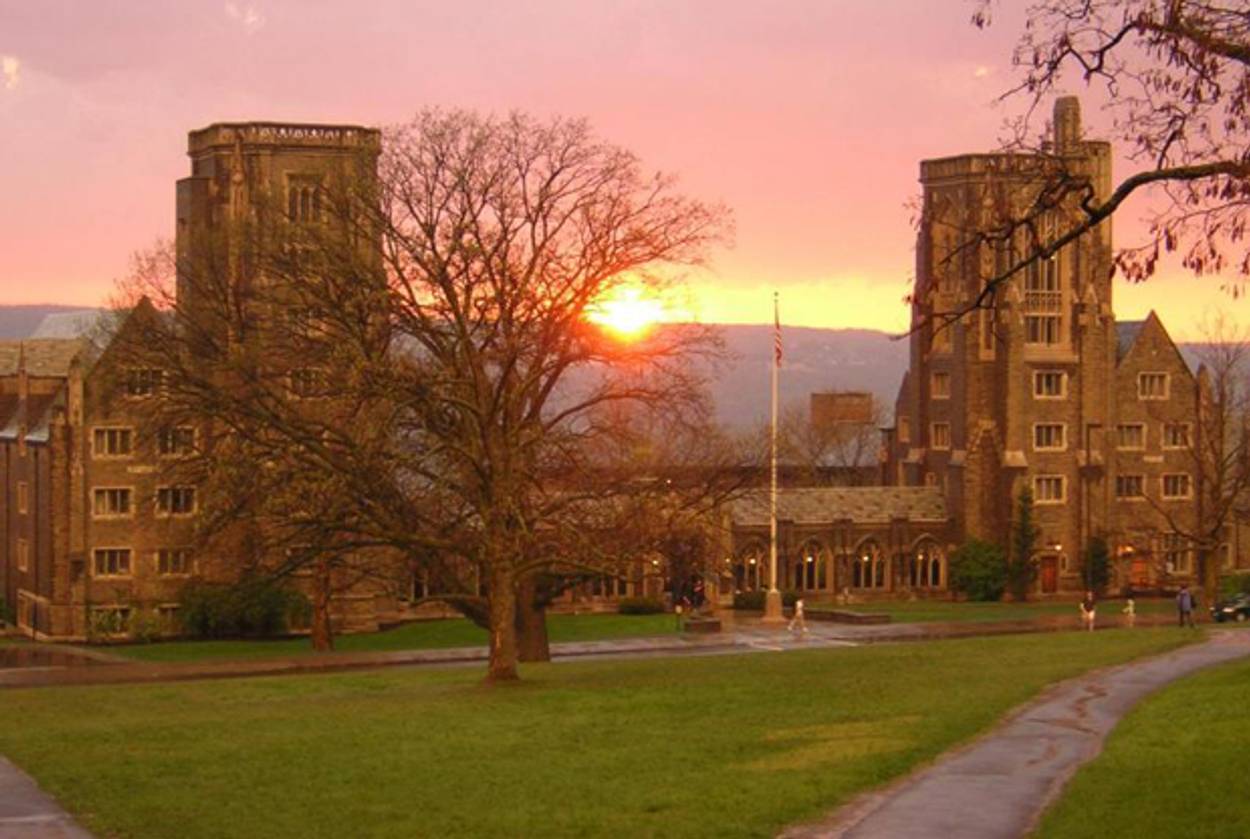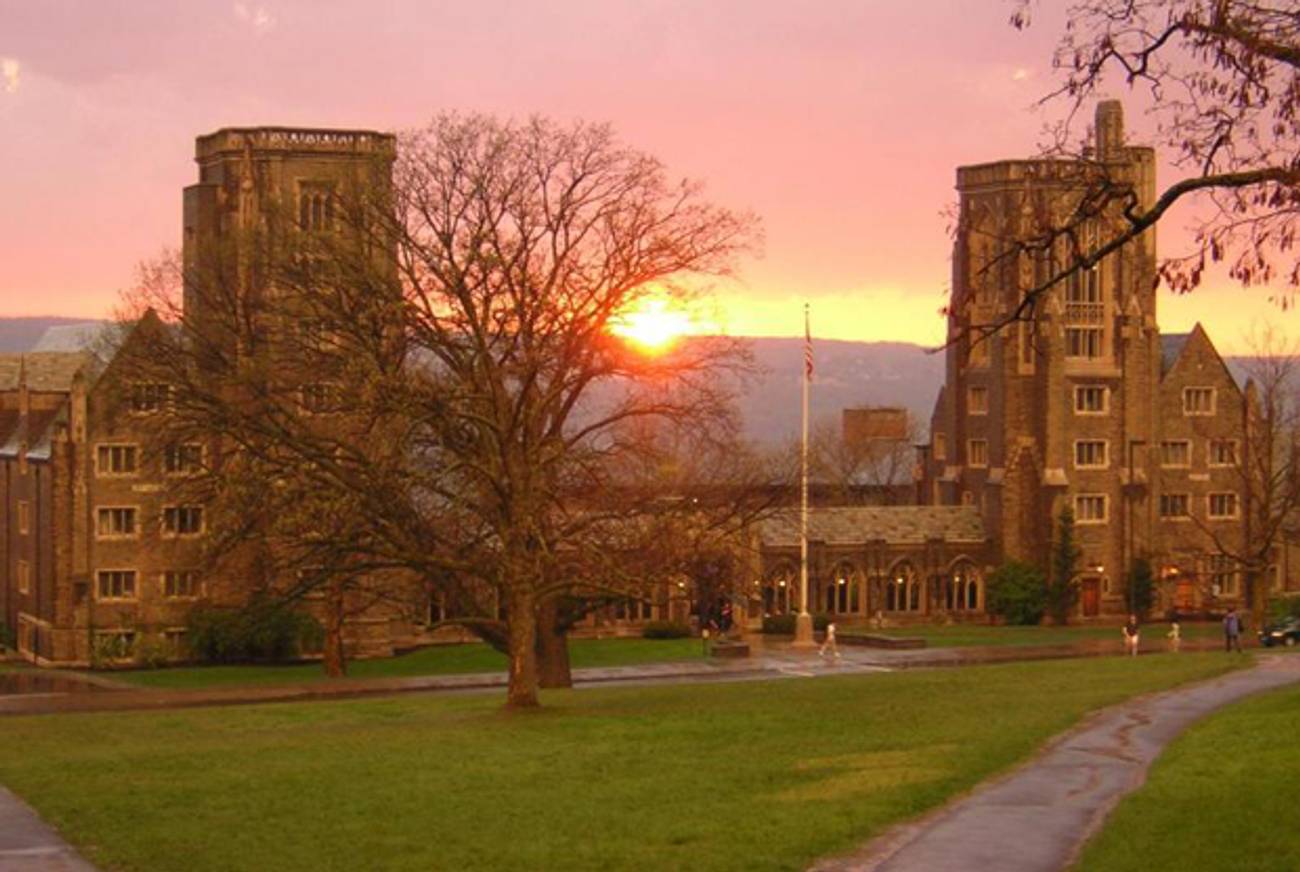Finding a Jewish Community at College
An excerpt from a panel discussion on ‘The Campus as Crossroads’




On Wednesday, I had the honor of moderating a terrific, lively (that’s Jewish for “contentious”) panel at Israeli Presidential Conference. Titled “The Campus as a Crossroads in the Life of a Young Jew,” the session—which featured Natan Sharansky, Taglit-Birthright CEO Gidi Mark and Mark Yudof, president of the University of California—might have been a predictable mix of hand-wringing and skepticism over the impact of BDS and other anti-Israel activism at colleges, had it not been for the presence of two other panelists: Andi Gergely, the head of European Union of Jewish Students, an umbrella organization for 34 national Jewish student unions in Europe and the FSU, and Rachel Greenspan, an Israel Government Fellow at the Hartman Institute. I wish I could reprint everyone’s remarks here. In lieu of that, below is an excerpt from Rachel’s prepared speech, which I think gives a nice window into just how nuanced and demanding a conversation it was—and how nuanced and demanding the challenge is as a whole.—Alana Newhouse
“A religious man is a person who holds God and man in one thought at one time, at all times, who suffers harm done to others, whose greatest passion is compassion, whose greatest strength is love and defiance of despair.”
So said Rabbi Abraham Joshua Heschel, the namesake of my high school. In tribute to the renowned Jewish scholar, Rabbi, and civil rights activist, the Heschel School in New York is a pluralistic Jewish Day School that consciously encompassed a mosaic of Jewish denominational affiliations. As a member of the third graduating class, I brought my background as the daughter of both a sofer stam—or Jewish calligrapher—and of a physicist’s daughter, whose adult bat mitzvah was only a few years before my own.
I set out to adulthood—to the crossroads of the college campus—in the hopes of fulfilling the pillars of a “religious person” as espoused by Heschel. I aimed to always keep God and man at the forefront and in the back of my mind, to be passionately compassionate, and to love enough to drive out despair. Each of these concepts maps onto some of the challenges that I faced on campus.
“To hold God and man in one thought at one time, at all times,” I interpret as navigating the acute tension in Judaism between the personal and the collective—the tension between individual belief and communal practice. This proved to be the first challenge I would face on my North American campus.
I quickly became a regular at Cornell’s Kosher dining hall on Shabbat. In retrospect, I’ve realized that these meals became fixture of my week not just because I wanted a tangible Judaism in my life, but also because it served my need to be a part of a community, a tribe. A need, I would argue, that many young Jewish students express through active participation in social groups on campus – be it a cappella groups, fraternities, or the like.
The community at Cornell’s shabbat dinners was incredibly welcoming and I forged some of my closest friendships over matzoh ball soup in those first months. But as my social confidence soared, my confidence in my halachic aptitude plummeted.
Growing up, I loved performing many Jewish rituals: leading Kiddush at my family’s Shabbat dinner table was a highlight of my week. But in this new environment, I was afraid to even say motzi, the blessing over the challah. Would I be violating the orthodox prohibition against women singing in front of men?
In short, I had eighteen years of Jewish theory under my belt, but I was too afraid to put it into public practice.
This first foray into the Jewish world of the campus showed me that the Jewish community hobbled together on campus is often primarily populated by orthodox Jewish students, which is externalized in the dominant practices of the Jewish public sphere.
I want to be clear. The community at Cornell was friendly and inviting. But this new Jewish community, this primarily Orthodox community, forced me to ask myself difficult questions. How much did I value Jewish observance? Were my desires to become more observant coming from myself, or from my desire to be a part of a community?
As the semesters wore on, I found opportunities to act on Heschel’s second pillar of a religious man—“to suffer harm done to others”—and I acted on this passion through the Jewish social justices groups on campus.
My Jewish education was deeply influenced by Jewish imperatives to see my Jewish identity as one strongly tied to my human identity. I became the head of Challah for Hunger, an organization that uses campus volunteers to bake and sell challot whose proceeds it then donates to organizations promoting sustainable development in Sudan and in the local community. Participating in Challah for Hunger at Cornell gave me the context in which to “knead” out the questions I had surrounding my own Judaism. Making sure enough volunteers would come to braid loaves, bracing for outdoor challah sales at the mercy of Ithaca’s notorious weather—these were healthy stresses in my voyage with Judaism. My focus shifted to the humanist side of my Jewish identity instead of the many question marks surrounding my Jewish observance. Through my time with Tzedek: Jewish Social Justice, I encountered many young Jews who felt passionately about this aspect of Judaism and chose the imperative of tikkun olam, fixing the world, as the way to express their Judaism in college.
On the surface, this isn’t a challenge. There is nothing wrong with focusing on the rich Jewish tradition of pursuing justice. But I was using this as an outlet to escape the questions surrounding my Jewish observance. My ideal Jewish identity is one of balance: balance between particular Jewish practices and Jewish universal values; balance between Jewish peoplehood and global citizenship. I couldn’t find that balance.
The final obstacle that I encountered that Heschel articulated, was ensuring that “my greatest strength [was] love and defiance of despair.”
While my relationship with Israel on campus was not quite as dramatic as this phrasing would indicate, I did find it difficult to balance my love for the Jewish state and my discontent with the discourse surrounding Israel while I was on campus.
The dominant Israel oriented organizations at Cornell were focused primarily on hasbara activities. While I understood the importance of disabusing some of the misinformation about Israel on campus and abroad, I found it frustrating to encounter one monolithic opinion about Israel and her policies within the Jewish community.
Throughout my life, one of the things that has kept me coming back to Judaism is the high intellectual standard to which our tradition holds. Talmud class was never dedicated only to the Hillels, the winners of the Talmudic debates, but rather, we set aside just as much time and effort to following the logic of Shammai and his fellow runners-up. The language that I had employed in my Jewish life for so long—a language rich in logical maneuvers and analytical devices—seemed foreign in the university’s Israel-related Jewish context.
I also experienced alienation from the Israel dialogue on the left—as many young American Jews do, I heard shouts of apartheid and attacks on Zionism—but because I felt uncomfortable within the Jewish community talking about Israel at Cornell, I didn’t feel like I had the support that I needed to campaign against Israel’s true detractors—and I very much disengaged from the Israel debate on campus.
As I prepared to graduate, I knew that I needed to dedicate some of the experimental period in my life to the continuing experimental period in Jewish sovereignty. Further, what place to try to fulfill Heschel’s vision of a religious man than the homeland of the Jewish people. Wanting a serious, long-term, and in depth look at Israel, I found myself looking at MASA’s hundreds of programs and in particular the Israel Government Fellows program—run through the Menachem Begin Heritage Center, IGF promised to provide an immersive experience in the Israeli political environment. The IGF staff adeptly placed me at the Shalom Hartman Institute on their iEngage Project, an initiative dedicated to bringing the “troubled committed” Jewish community back into a productive conversation about Israel and world Jewry.
Since coming to Hartman and participating in the Israel Government Fellows program, I felt exposed to enough of the marketplace of ideas about Israel to engage in debate. Only when I felt like there was nuance and variety to the rhetoric to which I was exposed did I feel comfortable to put my guard down and dive into some of the more complex challenges that Israel faces—and I’ve become a more balanced and confident Israel advocate because of it.
My speech today was focused on my personal attempt to become “a religious person” as Heschel described. I’ve articulated a number of individual struggles that young Jews may encounter in their Jewish lives and how they complicated my relationship with the collective. It doesn’t inspire a clear plan of action—these are messy, emotion-laden issues. And I don’t want these challenges to distort the fact that I had a vibrant and meaningful Jewish existence on campus. But I hope that they have showcased room for opportunity and engagement.
As Rabbi Heschel said, “new insight begins when satisfaction comes to an end.”
Rachel Greenspan was a participant in the 2012-2013 cohort of the Israel Government Fellows, which is a ten month MASA program that offers young leaders the opportunity to work in and learn about the Israeli political environment. Through IGF, she worked as a research assistant at the Shalom Hartman Institute in Jerusalem, where she is currently employed. Rachel graduated with distinction from Cornell University in 2012 with a degree in Government and Near Eastern Studies. On campus, she was a Jewish student leader and served as President of Tzedek: Jewish Social Justice and as a gabbai of an independent minyan.